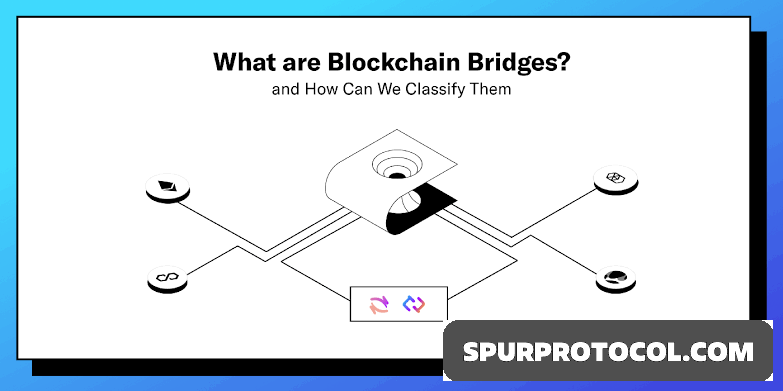Blockchain Bridges – The Key To A Multi-Chain Future (or A $1 Billion Security Risk?)
Crossing the Crypto Highway: Are Blockchain Bridges a Necessity or a Disaster Waiting to Happen?
Go Back
🕒 1:18 PM
📅 Mar 02, 2025
✍️ By chybunz
Crossing the Crypto Highway: Are Blockchain Bridges a Necessity or a Disaster Waiting to Happen?
Go Back
🕒 1:18 PM
📅 Mar 02, 2025
✍️ By chybunz
Why Do We Even Need Blockchain Bridges?
Imagine you’re traveling to another country. You land at the airport, but your money doesn’t work there. To buy anything, you need to exchange it for the local currency.
Now, apply that same problem to blockchains.
Bitcoin, Ethereum, Solana, Binance Smart Chain—these are like different countries, each with its own currency and rules. The problem? They don’t naturally talk to each other.
Enter blockchain bridges. These tools let you move assets from one blockchain to another, like exchanging dollars for euros. In theory, blockchain bridges are the solution to crypto’s biggest problem: interoperability—the ability for different blockchains to communicate and share assets.
For example, if you hold Bitcoin but want to use it in DeFi applications on Ethereum, a bridge can “wrap” your BTC into an Ethereum-compatible token (like WBTC), allowing you to use it across different platforms.
But while bridges are essential for a multi-chain future, they also come with serious risks—some of the biggest hacks in crypto history have targeted blockchain bridges.
Let’s break down how they work, why they’re useful, and why hackers love them.
How Do Blockchain Bridges Work?
At their core, blockchain bridges work like a currency exchange between different blockchains. But instead of swapping dollars for euros, you’re swapping assets between networks like Ethereum, Solana, or Binance Smart Chain.
Here’s a simple example:
Let’s say you have 1 Bitcoin and want to use it in an Ethereum-based DeFi app. Since Bitcoin and Ethereum are separate networks, they can’t communicate directly. This is where a bridge comes in:
1. You send 1 BTC to a blockchain bridge.
2. The bridge locks that BTC in a smart contract.
3. It then mints an equivalent amount of wrapped BTC (WBTC) on Ethereum.
4. You can now use WBTC in Ethereum’s DeFi ecosystem, just like regular ETH.
When you’re ready to go back, the process reverses: you send your WBTC to the bridge, it burns the tokens, and releases your original BTC back to you.
This allows crypto to flow between blockchains—essential for DeFi, NFTs, and cross-chain applications.
Sounds great, right? Well, there’s just one problem…
Blockchain Bridges Are a Hacker’s Paradise
While bridges solve a major problem in crypto, they also introduce serious security risks. And when they get hacked, the losses are massive.
Some of the biggest hacks in crypto history have targeted bridges:
• Ronin Bridge Hack (2022) – $625M Stolen
The bridge connecting Axie Infinity to Ethereum was exploited, with hackers stealing over half a billion dollars.
• Wormhole Hack (2022) – $325M Stolen
A vulnerability in the Solana-Ethereum bridge allowed attackers to mint fake tokens and drain funds.
• Binance Smart Chain Bridge Attack (2022) – $570M Stolen
A hacker exploited a flaw in the bridge’s code, creating fake tokens and withdrawing real funds.
Why are bridges so vulnerable?
1. They Rely on Smart Contracts – If there’s a bug in the code, hackers can exploit it.
2. Centralization Risks – Many bridges rely on a few validators, making them easier to attack.
3. Locked Funds Are a Huge Target – Bridges hold large amounts of crypto, making them attractive to hackers.
Essentially, bridges are the weak link in the blockchain ecosystem—and hackers know it.
Are Bridges Worth the Risk?
Despite the dangers, blockchain bridges are still a necessary part of crypto’s evolution. Without them, users would be stuck in isolated blockchain ecosystems, unable to move their assets freely.
So, what’s the future of blockchain bridges?
• Better Security Measures – Developers are working on new bridge designs that reduce vulnerabilities.
• Layer 2 Solutions – Some argue that scaling solutions like rollups and sidechains will reduce the need for bridges.
• Interoperable Blockchains – Future blockchains may be built with cross-chain compatibility from the start.
For now, using bridges comes with risk—so always research before transferring assets. The next time you’re moving funds across chains, ask yourself: Is this bridge secure? Or am I walking into a trap?